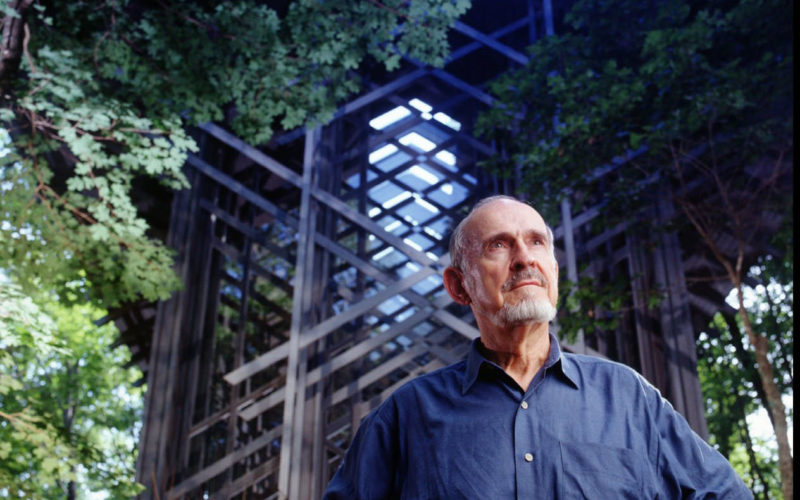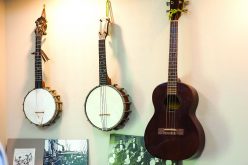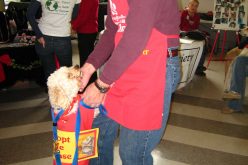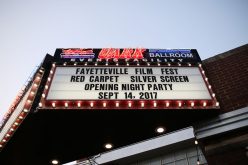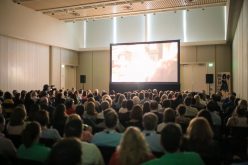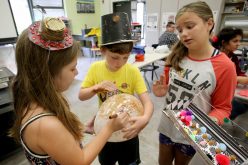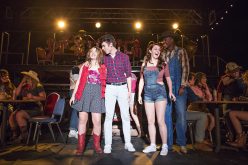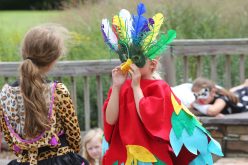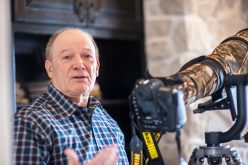Museum exhibit celebrates architect Fay Jones
BECCA MARTIN-BROWN
bmartin@nwadg.com
“I never tried to be a little Frank Lloyd Wright,” architect Fay Jones said in a video accompanying the Old Statehouse Museum’s “Outside the Pale” exhibit. “Mr. Wright himself assured me there was no such thing.”
But Jones was undeniably influenced by the legendary Wright, both in his choice of career — conceived when he was a boy in El Dorado after seeing a film about Wright’s Johnson Wax Building — and in Wright’s principles of “organic architecture” which Jones also applied — simplicity of construction, use of native materials, attention to crafted details ans seamless integration of building to site.
“Fay Jones’ architecture begins in order and ends in mystery,” Robert Adams Ivy Jr. wrote in the exhibit essay for “Outside the Pale,” which was on show at the Old Statehouse from June 1999 to May 2000. “His role can perhaps best be understood as a mediator, a human consciousness that has arisen from the Arkansas soil and scoured the cosmos, then spoken through the voices of stone and wood, glass and steel. Art, philosophy, craft, and human aspiration coalesce in his masterworks, transformed from acts of will into harmonies: Jones lets space sing.”
Jones himself said he was happy when his work transcended “mere building” and “rose to the level of architecture.”
Although he died Aug. 31, 2004, Arkansas’ most acclaimed architect is back in the spotlight in Northwest Arkansas thanks to an exhibit on show at the Bella Vista Historical Museum. On loan from the Old Statehouse, “Beyond the Pale: The Architecture of Fay Jones” came to Bella Vista at a perfect time, said Xyta Lucas, president of the Bella Vista Historical Society. The community boasts three Fay Jones designs, and two of them are celebrating anniversaries in 2018: the Mildred B. Cooper Memorial Chapel turned 30 in April, and the Bella Vista Country Club will be 50 in November. (The third structure, a private home built in 1981 and owned by John Drum, is featured in a permanent exhibit at the museum.)
The traveling version of the Old Statehouse exhibit initially came to the attention of Bella Vista historian Carole Linebarger Harter a couple of years ago, but “it was too large for our small museum,” Lucas said. “Then sometime this past winter, Carole happened to be in communication with the Old Statehouse Museum and found out there was a more compact version that would fit. So we brought it to the board, and they said yes.”
The exhibit is on loan to the Bella Vista Historical Museum from June through December, but it will take a side trip to be displayed at the Country Club for its November anniversary, Lucas said. Where it goes at the end of December remains up to the Old Statehouse.

Arkansas Democrat-Gazette/BOB COLEMAN
Cooper Memorial Chapel, Bella Vista. 07/01/06

Photo submitted
The Country Club building, designed by E. Fay Jones, was opened in 1968.

Keith Bryant/The Weekly Vista
In addition to structures, E. Fay Jones designed some furniture, including this chair that is on display at the Bella Vista Historical Museum.

Keith Bryant/The Weekly Vista
The E. Fay Jones exhibit, “Outside the Pale: The Architecture of Fay Jones,” sits at the Bella Vista Historical Museum. It’s a traveling exhibit from the Old Statehouse Museum in Little Rock and was brought to Bella Vista by volunteers. The museum will have the display on loan for six months, from June through December, and at the end of that period a decision will be made regarding its next destination.
There was no rental fee for the exhibit, Lucas said. “All we had to do was figure out how to get it up here.” But that was more complicated than it might sound. The exhibit — three bifold panels with text and images on both sides — was packed in “coffin-sized or larger” wooden crates, she said.
Lucas turned to Cooper Communities, and an engineer, Ernie Deaton, volunteered to do the hauling on a business trip to Little Rock. Volunteers unloaded the crates when they arrived, others installed the exhibit, and Cooper Communities is storing the crates at no cost to the museum.
The three panels introduce Fay Jones, consider his design process and define the concept of “organic architecture.” Perhaps the biggest surprise to viewers might be the two chairs and two hassocks on display, which were also designed by Jones.
“I didn’t know he’d designed furniture,” Lucas said.
The Old Statehouse exhibit dovetails nicely with the museum’s permanent exhibit on Jones, which was created in 2017 and includes copies of his drawings for the Cooper Chapel.
Cindy Adams, director of the Cooper Chapel, told The Weekly Vista she loves the site and, with that anniversary on the way, what prevails is the timelessness of the design.
“It’s a landmark,” she said.
Despite pushing 30 years old, she said, the structure still appeals to newer, more diverse, younger audiences, and she can see people approaching it in awe every day.
“Everyone here takes so much pride in sharing this with the public,” she said.
Lucas told The Vista she appreciates Jones’ work for the simple, uncomplicated lines that come together to form something great.
“When he puts it all together, it’s just really beautiful,” she said. “It’s almost puzzling, the effect it has on us just looking at it.”
“I have often been referred to as a regionalist, and I’m not disturbed by that term at all,” Jones said in the “Beyond the Pale” video. “Because I think any architecture that is an organic architecture is going to have this sense of belonging to the place where it is. So if the particular place happens to be these hills … and the buildings respond to that, that pleases me no end.”
__
FAQ
‘Beyond the Pale:
The Architecture of Fay Jones’
WHEN — Through December; gallery hours are 1-5 p.m. Wednesday-Sunday
WHERE — Bella Vista Historical Museum
COST — Free
INFO — bellavistamuseum.org
__
FYI
Fast Facts:
E. Fay Jones
• The E stood for Euine, pronounced “yu-on.”
• He was born Jan. 31, 1921, in Pine Bluff to Euine Fay Jones and Candie Alston Jones.
• He enrolled at the University of Arkansas in 1938 but left to enlist in the U.S. Navy at the beginning of World War II.
• He married Mary Elizabeth Knox of Hot Springs on Jan. 6, 1943, while on leave in San Francisco.
• After the war, he was a draftsman for an architecture firm in Little Rock before returning to the UA in 1946.
• He earned his Master of Architecture degree at Rice University.
• He became the first chairman of the architecture department at the UA in 1966 and was named the dean of the first School of Architecture there in 1974.
• He won the American Institute of Architects Gold Medal in 1990.
• Thorncrown Chapel near Eureka Springs is perhaps the most acclaimed of his designs.

